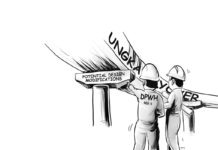BY SAMMY JULIAN
A RURAL development doctrine must, if it is to be effective, give deeper and more concentrated thought to the role of the local place as we seek to find solutions to the ongoing problems of population imbalance and the dissolution of the countryside.
This is the reason why the World Bank’s Board of Executive Directors recently approved a financing package for rural infrastructure as well as small business, and livelihood projects for farmers and fisherfolk in the Philippines.
The assistance aims to raise rural income and reduce poverty.
Called the Philippine Rural Development Project (PRDP), the new $508.25-million financial package aims to improve the productivity of small farmers and fisherfolk as well as their access to markets. This project will be implemented by the Department of Agriculture (DA).
Over 70 percent of the total financing will be utilized for funding infrastructure projects of local government units. This will include farm-to-market roads, bridges, tire tracks, communal irrigation, potable water systems, post-harvest facilities, production facilities, fish landings, fish sanctuaries, storage facilities, trading posts, green houses, solar driers, and slope stabilization works.
The geo-tagging tool, developed by the DA and currently being used to monitor agri-fishery infrastructure projects, will provide online updates on the progress of PRDP-funded projects.
The project will directly benefit close to two million farmers and fisherfolk, almost half of whom are women.
PRDP will also indirectly benefit an estimated 22 million people, which includes 10 million women.
Investments in rural infrastructure will benefit producers, traders and the rural population through better transport infrastructure, reduced travel time and improved access to markets.
The project will likewise encourage farmers and fisherfolk to increase and diversify production and to engage in value-adding activities, thus yielding increased incomes.
Small business and livelihood activities will also benefit small-scale and poor producers through the provision of technical assistance, training, market linkages, and financial assistance.
Under the PRDP, we see deeper collaboration between the national government and local government units (LGUs) where the former provides technical and financial support to local planning, implementation and delivery of services and infrastructure.
This is an important step in integrating local priorities in the national development programs, making both effective partners in the development of the farming and fishing sector.
The PRDP expects to achieve within six years at least five percent increase per year in real household annual incomes of beneficiaries, mostly farmers and fisherfolk; 30 percent increase in income for targeted beneficiaries of small business and livelihood projects; seven percent increase in value of products sold to the market; and 20 percent increase in number of farmers and fisherfolk with improved access to services.
The package includes a $7-million grant from the Global Environment Facility (GEF) for strengthening conservation and protection of selected coastal and marine protected areas.
Priority areas for conservation include Tayabas Bay in Quezon; Green Island Bay in Palawan; Ticao Pass in Sorsogon and Masbate; Guimaras; Danajon Bank in Bohol; and Guiuan Coast in Eastern Samar.
The GEF is a collaboration of 183 countries working together with international institutions, civil society organizations, and the private sector to address global environmental issues.
Truly, the support for PRDP reaffirms the international community’s commitment to the agriculture sector with the end view of creating jobs and generating opportunities to improve lives for farmers and fisherfolk.
This project is aligned with the Philippine Development Plan (PDP) of establishing a competitive and sustainable agriculture and fisheries sector, and echoes the new Country Partnership Strategy geared toward more inclusive growth.
Despite rapid urbanization, 51 percent of Filipinos reside in rural areas and support half the labor force. Many of them – particularly farmers and fisherfolk – are poor, constrained by poor infrastructure for transport, particularly roads, port facilities, among others and lack of post-harvest facilities.
Given that a significant number of poor people are in the rural areas, successful implementation of this project could boost the country’s efforts to achieve growth that creates jobs./PN



